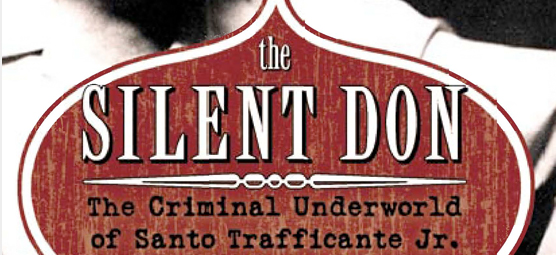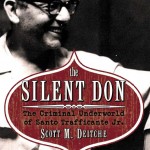Monday, August 4, 2014: The Havana Underworld: Raul Gonzalez Jerez

In January 1959 when Fidel Castro seized control of Cuba from Fulgencio Batista, few of the American mobsters who ran Havana’s legendary casinos thought their world would be turned upside down so quickly. But Castro and his supporters wasted no time in driving out the Mob and shutting down the casinos.
Some, such as Tampa Mob boss Santo Trafficante Jr., decided to stay and wait out the new regime. He figured Castro would relent and re-open the casinos. Instead, Castro threw Trafficante in jail. After his brief stint in the Triscornia Detention Facility, Trafficante fled to the United States and relocated to Miami.
Trafficante was not alone. Long an “open city” (meaning any Mob family could operate there), Miami was a hotbed of Mafia snowbirds dating back to Al Capone and his palatial estate on Palm Island. When Trafficante went there in 1960, he found many of his mobster buddies from up North settling there to open up businesses and rackets. He also found many of his Cuban gangster friends who had fled when Castro seized power. These gangsters were not only creating their own niche in the Miami underworld, but finding time to join various CIA-sponsored activities designed to remove Castro from power.
Over the course of the 1960s, these groups of Cuban exile gangsters formed a loose alliance under the direction and tutelage of Santo Trafficante Jr. Unlike most other American Mafioso, Trafficante spoke fluent Spanish and shared their Cuban cultural heritage from his days in Ybor City, an Italian/Cuban/Spanish neighborhood of Tampa.
One of Trafficante’s connections in the new Cuban Mob was Raul Gonzalez Jerez. Raul worked in Cuba at the Sans Souci, the flagship of Trafficante’s Havana casino empire. Jerez also provided Trafficante with a legitimate income, as a talent agent. As president of a talent booking agency, International Amusements Corporation, Jerez signed the Tampa Mob boss to two two-year contracts for a salary of $15,000 and five percent of the total cost of the shows the company backed.
When he landed in Miami, Jerez became involved in CIA-backed anti-Castro activities, culminating in his involvement in the botched Bay of Pigs invasion. Following that failed attempt to land on Cuba and take back control from Castro, Jerez migrated back to the underworld.
An FBI report, dated June 12, 1968, described Jerez as “a longtime close personal friend of Santo Trafficante” and “deeply involved in narcotics trafficking.” Jerez was also overheard saying of Trafficante, “If he goes to jail, I will send him cigars and when he gets out, I will shake his hand.”
Jerez owned and operated a number of successful bars and lounges in Miami. On January 21, 1969, Jerez held the grand opening of the 21 Executive Club. The Club, located in what is now Little Havana, became a well-known hangout for mobsters and anti-Castro operatives. Trafficante attended the opening alone but managed to sneak in a few dances with a female Cuban Mob associate named Carmen Carrio. Carmen worked as a secretary in the office of the former Florida Rep. George Smathers.
Jerez continued his criminal connections in Miami through the 1970s. In January 1976, the FBI in Miami reported that he was living in Key Biscayne and operating a large sports bookmaking operation, taking bets up to $20,000 a game. But by the early 1980s, the original Cuban Mob was fading away, replaced by Colombian cartels and a younger, more ruthless breed of Cuban gangsters (think Al Pacino in Scarface). Jerez’s name faded from law enforcement reports. He died at age 58 in April 1992.
Feedback or questions? Email blog@themobmuseum.org






